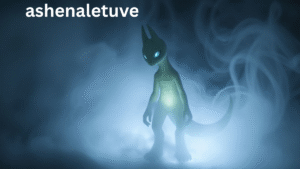
The Origin and Meaning of Ashenaletuve
The term “ashenaletuve” possesses a rich etymological background that reflects its deep-rooted significance in various cultures. Its origin can be traced to ancient linguistic traditions, where it was used to describe not only a concept but also a philosophical stance prevalent among communities that valued harmony and balance. The word derives from a combination of two key elements: “ashena,” which connotes a state of equilibrium, and “letuve,” a term that embodies growth and transformation.
Historically, ashenaletuve has been pivotal among indigenous groups, particularly in their rituals and social practices. Over the centuries, the interpretation of ashenaletuve has evolved, adapting to the changing socio-cultural landscapes. In numerous tribes, this concept was revered as a guiding principle that encapsulated the duality of life—the interplay of light and darkness, of joy and sorrow. Communities often used ashenaletuve in storytelling, music, and art, positioning it as a cornerstone of their cultural identity.
The transition of ashenaletuve from a local lexicon to a more universally acknowledged concept illustrates its enduring resonance across generations. Today, it finds usage in various domains, including psychology, environmental studies, and even spirituality, echoing its foundational ethos of balance and growth. As we continue to explore the multifaceted layers of ashenaletuve, we acknowledge its role as a vital component of collective memory and identity.
Cultural and Social Impacts of Ashenaletuve
Ashenaletuve, recognized for its multifaceted nature, permeates various elements of cultural and social life across different communities. It serves as a vital component in traditional practices, often embodying beliefs and values that have been passed down through generations. In many societies, ashenaletuve is not merely a concept but a living tradition that shapes rituals, art, and communal gatherings. These practices foster a sense of belonging among individuals, reinforcing community bonds and encouraging collective identity.
In modern contexts, ashenaletuve adapts and transforms under the influence of contemporary life. Urbanization and globalization have introduced new interpretations, enabling it to resonate with younger generations who seek to balance tradition with innovation. This dynamic interplay allows ashenaletuve to remain relevant, as it is fast becoming intertwined with contemporary art, music, and literature. Through various mediums, today’s artists and creators channel the essence of ashenaletuve, exploring its themes and messages in modern narratives.
The significance of ashenaletuve extends beyond artistic expressions; it plays a crucial role in shaping social interactions. It acts as a bridge between the past and present, providing a platform for intergenerational dialogue among family members and community leaders. Furthermore, the communal expressions of ashenaletuve foster inclusivity, inviting individuals from diverse backgrounds to participate in shared experiences. As this concept permeates everyday life, it cultivates values such as respect, understanding, and appreciation for cultural diversity.
As we navigate the complexities of the modern world, the essence of ashenaletuve offers a lens through which we can examine our cultural identity. Its impacts are far-reaching, influencing not only individual experiences but also broader societal dynamics. By acknowledging its significance, communities can continue to honor the past while embracing the future.

Exploring Ashenaletuve Through Art and Creativity
The representation of ashenaletuve in the realm of art and creativity demonstrates its profound impact on various cultural expressions. Artists across multiple mediums have sought to interpret and express the essence of ashenaletuve, often targeting its emotional and philosophical dimensions. In literature, authors weave narratives that resonate with the themes encapsulated by ashenaletuve. This multifaceted concept often inspires tales of transformation, resilience, and the nuanced interplay between human nature and the environment, allowing readers to connect deeply with the underlying sentiments involved.
Visual arts also capture the essence of ashenaletuve, with numerous artists utilizing painting, sculpture, and digital media to convey its myriad interpretations. Through vibrant colors, intricate designs, and imaginative forms, these artists evoke the emotions associated with ashenaletuve, encouraging viewers to delve into their own experiences and perceptions. Each brushstroke or sculpted detail carries layers of meaning that reflect personal and collective histories, demonstrating the universal relevance of this concept. Therefore, ashenaletuve becomes not only a subject to be depicted but also an emotional journey that invites observer engagement.
Additionally, music serves as a powerful medium for expressing the intricacies of ashenaletuve. Composers and musicians create auditory landscapes that resonate with its significance, utilizing various genres and rhythms to encapsulate moods and feelings tied to ashenaletuve. The melodies often evoke a sense of longing, nostalgia, or celebration, enriching the listener’s understanding of this intricate phenomenon. Lyrics may further engage with the concept, allowing for personal interpretations and emotional connections to flourish.
Through the lenses of literature, visual arts, and music, the exploration of ashenaletuve reveals its multifarious meanings and emotional depth. These creative expressions enable a richer appreciation of the complexities surrounding ashenaletuve while inviting audiences to consider their own relationship with this captivating theme.
Future Perspectives: Ashenaletuve in a Global Context
The concept of ashenaletuve, deeply rooted in cultural practices and social connections, is poised for significant evolution as global cultures continue to interconnect. The increasing migration of peoples and the rapid advancement of technology are pivotal changes that will shape the future landscape of ashenaletuve. As individuals from diverse backgrounds interact more frequently, the shared meanings and practices associated with ashenaletuve may undergo a transformation, leading to a richer tapestry of interpretations and applications.
One possible outcome of this interconnectedness is the emergence of hybrid forms of ashenaletuve that meld traditional practices with contemporary influences. As global communication promotes the sharing of cultural narratives, what was once confined to specific geographic or social contexts may now resonate across multiple platforms and audiences. This can enhance the significance of ashenaletuve, making it relevant not only to its originating culture but also to a wider array of global communities.
Furthermore, as globalization continues to reduce cultural barriers, the importance of ashenaletuve as a means of cultural identity preservation could become more pronounced. Societies might increasingly rely on ashenaletuve to articulate their distinctiveness in an interconnected world, reinforcing its role in fostering community pride and continuity. Educational and artistic initiatives may emerge, focusing on the cultivation and celebration of ashenaletuve, enabling younger generations to appreciate and maintain the legacy of their ancestors.
As we consider these future perspectives, it is clear that the relevance of ashenaletuve will remain robust, adapting to the changes brought about by globalization while maintaining its core values. It invites us to reflect on the significance of cultural heritage in a rapidly evolving landscape and encourages a dialogue that honors tradition while embracing innovation.
</pmoreover,>


